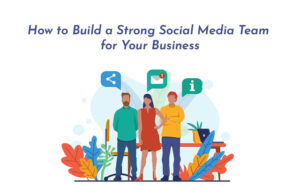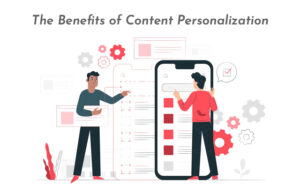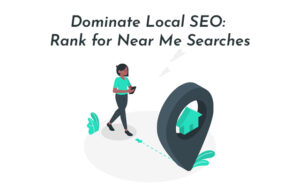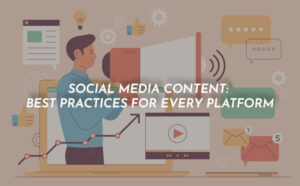Introduction: The Impact of Live Events on Marketing
Live events stand as formidable pillars in the realm of marketing, offering a unique avenue for brands to engage with their audience on a profound level. As we explore the intricate dynamics of live event engagement, it becomes imperative to delve into the psychology that underpins this interaction. Understanding the intricacies of human behavior during live events is not merely a facet of event planning; it is a strategic endeavor to leave an indelible mark on the minds of attendees.
I. The Power of Experiential Marketing
A. Creating Immersive Brand Experiences
Experiential marketing transcends traditional promotional tactics, immersing attendees in a multisensory journey. Brands craft environments that stimulate sight, sound, touch, and even taste, forging an unforgettable encounter that extends beyond mere product or service promotion.
B. Establishing Emotional Connections
At the heart of live event engagement lies the ability to evoke genuine emotions. Brands strategically design experiences that resonate emotionally with attendees, forging a connection that goes beyond rationality. Emotional engagement leads to brand loyalty and advocacy.
C. Fostering Long-lasting Memories
Live events become milestones in the memory of attendees. Brands that orchestrate memorable experiences leave a lasting imprint on the subconscious. These memories act as anchors, influencing future purchasing decisions and brand perceptions.
II. Leveraging Social Proof and FOMO
A. Building Anticipation through Social Media
Social media serves as a powerful tool in building anticipation for live events. Brands strategically deploy teasers, countdowns, and behind-the-scenes content to generate buzz and captivate the audience’s attention before the event unfolds.
B. Harnessing Fear of Missing Out (FOMO)
The fear of missing out is a psychological trigger that compels individuals to be part of an experience. Live events, by their nature, create a sense of exclusivity. Leveraging FOMO motivates potential attendees to actively seek participation to avoid feeling left out.
C. Showcasing Attendee Testimonials and Experiences
Real voices carry significant weight. Brands amplify engagement by showcasing authentic testimonials and experiences from previous attendees. This social proof serves as a persuasive force, influencing the decisions of those contemplating event participation.
III. The Role of Neurotransmitters in Engagement
A. Dopamine’s Influence on Excitement and Reward
Dopamine, the brain’s pleasure and reward neurotransmitter, plays a pivotal role in live event engagement. The anticipation and thrill of live experiences trigger dopamine release, creating an exhilarating sense of excitement and reward.
B. Oxytocin and the Creation of Trust and Connection
Oxytocin, often dubbed the “bonding hormone,” is essential for building trust and connection. Live events, with their communal nature, stimulate oxytocin release, fostering a sense of unity and connection among attendees and with the brand.
C. Serotonin in Building Positive Associations
Serotonin, linked to mood and well-being, contributes to the positive associations formed during live events. Shared positive experiences elevate serotonin levels, creating a sense of joy and satisfaction associated with the brand.
IV. Designing Interactive and Personalized Experiences
A. Gamification Strategies for Engagement
Gamification injects an element of playfulness into live events, increasing engagement. Interactive games, challenges, and rewards not only entertain but also encourage active participation, creating a dynamic and memorable experience.
B. Personalized Touchpoints for Attendees
Personalization goes beyond addressing attendees by name. It involves tailoring aspects of the event experience to individual preferences. From curated content recommendations to customized networking opportunities, personalization enhances attendee satisfaction and engagement.
C. The Impact of User-Generated Content
Encouraging attendees to create and share content adds an authentic dimension to the event. User-generated content serves as a testament to the event’s impact, amplifying reach and engagement far beyond the physical confines of the venue.
V. The Psychology of Visual Elements
A. Color Psychology in Event Branding
Colors evoke emotions and perceptions. Thoughtful use of color in event branding can influence mood and create a cohesive brand identity. Understanding color psychology ensures that visual elements align with the intended emotional impact.
You would like to read: The Psychology Of Click-Worthy Content: Unveiling The Secrets To Engage And Captivate
B. The Influence of Design on Emotional Responses
Event design is not merely aesthetic; it shapes emotional responses. Spatial layouts, signage, and visual cues impact how attendees navigate and experience the event. Strategic design elicits desired emotional reactions, contributing to overall engagement.
C. Utilizing Visual Cues for Information Retention
The human brain processes visuals faster than text. Leveraging visual cues, such as infographics and memorable imagery, enhances information retention. Brands can convey key messages effectively, ensuring that attendees leave with a clear understanding of the brand narrative.
VI. Cognitive Load and Simplifying Information
A. Balancing Information Overload
While information is crucial, too much can overwhelm. Striking the right balance is vital to prevent cognitive overload. Presenting information in digestible chunks ensures that attendees can absorb and retain key messages without feeling overwhelmed.
B. Utilizing Chunking for Memory Retention
Chunking involves organizing information into manageable sections. Breaking down content into smaller, interconnected segments aids memory retention. Attendees are more likely to recall and internalize information presented in a structured and easily digestible format.
C. The Importance of Clear Communication
Clarity in communication is non-negotiable. Ambiguous messaging hinders engagement. Whether through presentations, signage, or promotional material, clear and concise communication ensures that attendees grasp the intended information without confusion.
VII. Behavioral Economics in Event Planning
A. The Scarcity Principle in Ticketing and Offers
The scarcity principle, a cornerstone of behavioral economics, is a potent force in event planning. Limited availability of tickets or exclusive offers creates a sense of urgency, driving attendees to secure their spots promptly.
You would like to read: Winning Strategies: Consumer Psychology In Marketing
B. Leveraging Anchoring and Pricing Psychology
Anchoring involves influencing decisions by presenting initial information. In event pricing, establishing a reference point influences how attendees perceive the value of tickets and packages. Strategic pricing considerations can enhance perceived value and drive ticket sales.
C. Nudging Attendees Towards Desired Actions
Nudges are subtle prompts that guide behavior. From strategically placed signage to encouraging specific interactions, event planners can employ subtle nudges to steer attendees toward desired actions, enhancing overall engagement.
VIII. The Impact of Community and Social Dynamics
A. Building a Sense of Belonging
Live events provide a unique opportunity to foster a sense of belonging. Creating spaces and activities that encourage interaction and networking contributes to a community atmosphere, enhancing the overall attendee experience.
B. Encouraging Peer Interaction
Attendee-to-attendee interaction is a valuable aspect of live events. Facilitating opportunities for peers to connect and share experiences contributes to a vibrant and collaborative environment. Attendees are more likely to engage when they feel part of a supportive community.
C. Creating Communities Beyond the Event
The engagement cultivated during live events can extend beyond the physical gathering. Leveraging social media groups, forums, and post-event communication channels sustains the sense of community, keeping attendees connected and involved.
IX. Measuring and Analyzing Psychological Impact
A. Utilizing Surveys and Feedback
Quantifying psychological impact necessitates feedback. Post-event surveys provide valuable insights into attendee experiences, preferences, and emotional responses. Systematic analysis of this data informs future event strategies and adjustments.
B. Analyzing Social Media Metrics
Social media metrics offer real-time feedback on audience engagement. Analyzing likes, shares, and comments provides a qualitative measure of the psychological impact of event content and interactions, guiding ongoing marketing efforts.
C. Assessing Long-term Brand Perception
The enduring impact of live events extends beyond immediate metrics. Evaluating long-term brand perception involves tracking how attendees recall and associate the event with the brand. Positive long-term perceptions contribute to sustained brand loyalty.
In conclusion, the psychology of live event engagement in marketing is a multifaceted exploration of human behavior, emotion, and cognition. As brands delve into the intricacies of creating immersive experiences, understanding the psychological nuances becomes a compass for crafting events that resonate deeply with attendees. By strategically integrating these psychological principles, marketers can not only elevate live event engagement but also leave an enduring mark on the psyche of their target audience.










